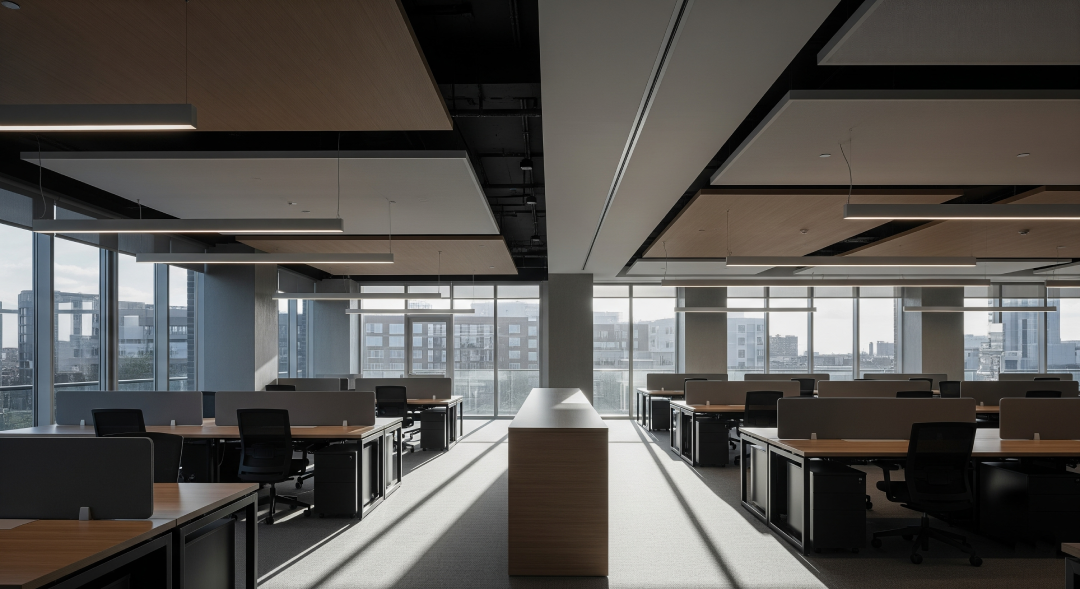The Intentional Office
Rethinking Purpose and Presence in a Hybrid World

Introduction: Beyond Hybrid Chaos
The corporate office is undergoing a profound and strategic rebirth. For the C-suite, the long-held view of real estate as a static, operational cost is not just obsolete; it is a direct threat to enterprise value. In a global environment demanding unprecedented business agility and workforce fluidity, executives face a "Portfolio Paradox": managing a high-cost, illiquid asset class that is fundamentally misaligned with the dynamic nature of modern business. The challenge is no longer about managing attendance but about redefining the very purpose of physical space to justify its existence and expense.
This reality demands a fundamental shift from reactive "Real Estate Management" to a proactive, C-suite-led capability: "Portfolio Orchestration." This new operating model requires deep collaboration among the Chief Financial Officer (CFO), Chief Human Resources Officer (CHRO), and Chief Operating Officer (COO) to transform the real estate portfolio from a legacy liability into a strategic asset that actively drives enterprise value. The office must now offer a compelling, commute-worthy experience engineered to enhance human performance, foster critical connections, and strengthen corporate culture.
The Data-Driven Reality of 2025
The U.S. corporate workplace is defined by a new, data-rich equilibrium. Ignoring these empirical realities represents a significant strategic oversight and an unmeasured drain on corporate resources.
This "ghost space" means on any given day, nearly three-quarters of the office space companies are paying for is sitting empty, representing a massive, unmeasured operational cost.
The Mandated Hybrid & The Policy-Reality Gap
The era of workplace experimentation is over. A decisive shift toward structured, mandated hybrid work is the new standard. 92% of organizations now have definitive in-office policies, with Fortune 100 companies averaging 3.74 mandated days per week. Despite these mandates, a significant gap persists between policy and actual attendance, creating a "mid-week mountain" of overcrowding while offices become "ghost towns" on Mondays and Fridays.
The "Flight to Experience" in a Bifurcated Market
The office market is sharply divided. A widening performance gap exists between prime, amenity-rich "magnet" buildings and older, functionally obsolete assets. Tenants are executing a pronounced "flight to experience," consolidating into fewer, better hubs and willingly paying a premium for spaces that enhance brand, culture, and employee well-being.
"The most critical metric is no longer market vacancy but internal utilization. An unintentional approach to physical space is now a significant strategic liability."
A Framework for Purpose: Modern Office Archetypes
A "one-size-fits-all" office strategy is no longer viable. The solution lies in developing a blended portfolio of specialized "Office Archetypes," each with a clear, intentional purpose aligned to specific business goals.
The Brand Embassy
A physical environment meticulously designed to be the living manifestation of a company's culture, values, and mission.
The Collaboration Hub
A dynamic, high-energy environment engineered to maximize the effectiveness of in-person and hybrid teamwork.
The Innovation Lab
A protected, agile environment designed to accelerate experimentation and scale breakthroughs, often separate from the core business.
The Social Anchor
A workplace primarily designed to foster social connection and build community, responding to employee needs for interaction.
Case Study: Putting Theory into Practice
Leading organizations are already demonstrating how a purpose-driven real estate strategy transforms a liability into a high-performance asset. The approaches by JPMorgan Chase and Ford Motor Company offer two powerful blueprints.

JPMorgan Chase: The "Curated Destination"
JPMC's new headquarters exemplifies an inwardly focused strategy to optimize human capital, blending the Brand Embassy and Social Anchor archetypes. The multi-billion-dollar investment is a tool for talent acquisition, designed to be a "high-performance engine" that eliminates friction from the workday through human-centric design, pervasive technology, and a curated hospitality experience.

Ford Motor Company: The "Open Ecosystem"
In stark contrast, Ford's Michigan Central project is the archetypal Innovation Lab, an outwardly focused platform for industry-wide innovation. Facing disruption, Ford transformed a derelict train station into an "open ecosystem" to co-create mobility solutions with external partners, startups, and the community. The strategy admits that innovation can't be contained within corporate walls; instead, Ford built the place where innovation happens.
Conclusion: Designing Your Future
The traditional, static model of corporate real estate is untenable. The path forward requires a fundamental shift from reactive "Real Estate Management" to proactive "Portfolio Orchestration." For executives ready to act, the research points to a clear, four-part strategic roadmap:
-
1. Right-Size Based on Utilization, Not Vacancy
Deploy workplace analytics to gather empirical data on actual peak utilization. Use this data to eliminate costly "ghost space" and redirect savings toward strategic investments.
-
2. Consolidate and Invest in "Commute-Worthy" Experiences
Divest from aging, low-quality assets and consolidate into high-quality "magnet" buildings in vibrant, amenity-rich locations to boost talent attraction and ROI.
-
3. Embrace Flexible Space as a Strategic Tool
Integrate a flexible space component into your portfolio to convert fixed costs into variable expenses, enhancing agility and providing high-quality workspaces closer to where employees live.
-
4. Design for Agency and Purpose
Redesign office layouts to align with how modern work happens. Reduce dedicated desks and significantly increase the variety of tech-enabled collaborative and focus spaces.
Companies that embrace this integrated vision will turn their real estate from a legacy liability into a powerful engine for talent, agility, and sustainable growth. Those that fail to adapt will find their progress constrained by the very buildings meant to support it, leaving them anchored to the past in a market that is relentlessly moving forward.
